Nike Air Zoom Terra Kiger 5
Test Locations: Gunnison, Colorado
Test Duration: 240 miles
Stated Stack Height: 14.5 mm (heel) / 10.5 mm (forefoot)
Stated Heel-to-Toe Drop: 4 mm
Stated Features:
- Zoom Air unit in the heel
- Nike React midsole foam
- Forefoot overlays for enhanced durability
- Outsole: Sticky rubber with multi-directional lugs, segmented rock plate
- Upper: Perforated mesh and synthetic
MSRP: $130 (On sale for $90-100)
Size Tested: 11.5
Stated Weight (US Men’s size 9): 264 g / 9.3 oz
Blister’s Measured Weight (US Men’s size 11.5): 304 g / 10.7 oz
Reviewer: 6’1”, 145 lbs
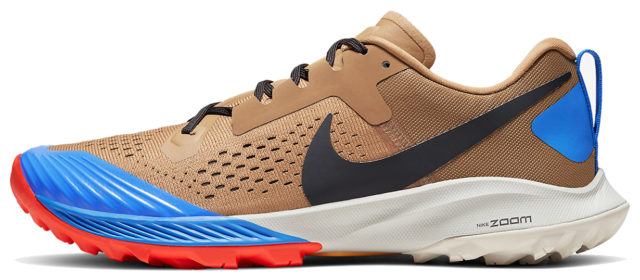
Intro
I’ll admit to being a little skeptical about the Nike Terra Kiger 5 before trying it. Nike is well known and well-loved by many in the road running community, but the brand is still kind of the new kid on the block when it comes to trail running products. They offer just three different trail running shoes: the Pegasus 36 Trail, the Wildhorse 5, and the Terra Kiger 5. Of these three, the Terra Kiger has the lowest stack height and heel-to-toe drop.
In combination with their fairly limited trail shoe options, Nike’s road running roots have led some trail runners to pass over their offerings when on the market for a new pair of trail shoes (myself included). My main concern has been that Nike’s trail shoes wouldn’t offer the same levels of protection and traction as shoes from other more trail-specific brands. If that’s been you in the past, I now think you’ve been missing out, now that I’ve had the chance to try the Terra Kiger 5.
After about 240 miles in the Terra Kiger 5, I’m beginning to understand why so many runners swear by Nike’s products. So what makes the Terra Kiger 5 stand out, and how does it compare to other offerings from popular trail running brands like Altra, Hoka, and Salomon? The Terra Kiger 5 is not perfect (I’m not convinced that any shoe is), but I do think that the Terra Kiger 5 will be a good option for most runners looking for a fairly light, efficient shoe. Read on to find out why.
Nike Terra Kiger: Different Versions
Technically speaking, Nike has now made 6 versions of the Terra Kiger. I had a pair of the Terra Kiger 2 back in 2015 and wasn’t overly impressed. They were comfortable, but the cushioning felt flat and the traction pretty much sucked. The Terra Kiger 2 felt slow at faster paces, and the low-profile outsole lugs couldn’t grip anything aside from smooth, hardpacked surfaces. The Terra Kiger 3 and 4 featured fairly minor updates to the original design of the shoe, so I wasn’t particularly interested in trying them.
The Terra Kiger 5 is a different story. Compared to the Terra Kiger 4, the 5 has a new outsole, midsole, and upper — so it’s basically a completely different shoe. The only things it has in common with previous versions are a 4 mm drop, a Nike Zoom Air unit in the heel (more on that later), and the name. In my opinion, the updated construction is way better than the first four versions of the shoe. It addresses most (but not all) of the issues I had with the Terra Kiger 2, and makes the Terra Kiger 5 a pretty fun shoe to run in.
It’s worth noting that Nike released the next version of the shoe, the Terra Kiger 6, in early March. While we haven’t had the chance to test the Terra Kiger 6 yet, it appears to be a very minor update. The Terra Kiger 6 has the same outsole and midsole as the 5, with just a few subtle tweaks to the upper to improve the fit and durability. Nike claims that the mesh used on the Terra Kiger 6 is more durable than the 5’s upper. In addition, the bottom end of the lacing system and the overlays around the toe bumper have been changed slightly to provide a more secure fit and reduce hotspots. Because the Terra Kiger 6 looks very similar to the Terra Kiger 5, we think that most of the points in this review are still relevant, especially key things like the midsole and outsole. Where applicable, I’ll discuss the potential differences between the 5 and the 6 throughout the review.
Fit
As with any shoe, you should try the Terra Kiger 5 in person before snagging a pair, if possible. With that in mind and for my feet, I think that the Terra Kiger 5’s fit might be the shoe’s best quality. Generally speaking, I’ve got pretty narrow feet with low arches, but I like a shoe that’s still got some room for my toes to splay. Unfortunately, I haven’t been able to find very many shoes that check all of those boxes. For example, the Altra Timp 1.5 has lots of room in the toebox, but it’s just a little too roomy throughout to feel secure on uneven terrain. On the other end of the spectrum, the La Sportiva Bushido II has an extremely secure, narrow fit that feels great on technical trails, but has very little room in the toebox which can become an issue on longer runs.
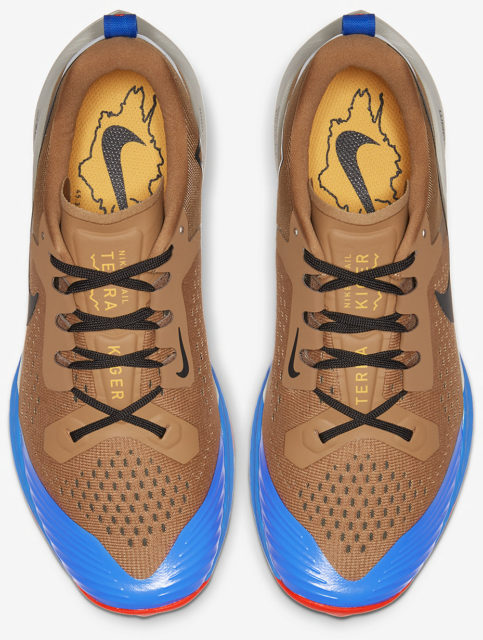
For my preferences and my feet, the Terra Kiger 5’s fit is just about perfect. The midfoot and heel feel somewhat similar to the La Sportiva Bushido II or Salomon S/Lab Ultra. The sides of the tongue are anchored to the midsole with a stretchy elastic gusset that wraps the midfoot when you put the shoe on, making for a very secure fit. Even better, the toe box is just wide enough to keep my toes from getting squished together without feeling overly roomy or sloppy. There’s still not as much room as you’d find in the toe box of the Altra Timp 1.5 or Superior 4.0, but it’s definitely roomier than the Bushido II or S/Lab Ultra. If anything, I expect the Terra Kiger 6 to have an even better fit through the forefoot — the smaller toe bumper on the 6 might give a bit more room for toe splay, but doesn’t look like it’ll compromise the security of the fit at all as the last of the shoe hasn’t changed.
As a whole, the Terra Kiger 5 feels secure on technical / uneven terrain while still remaining comfortable to me. With that said, if you have especially wide feet or high arches, the tight fit through the midfoot that I’ve enjoyed so much might cause some discomfort. Again, the reduction in the size of the overlays around the toe box on the Terra Kiger 6 might provide a bit more space than I experienced in the 5, but I’d still expect the overall fit to be a bit tight for runners with wide feet.
Weight
At a stated weight of 264 g / 9.3 oz for a US Men’s size 9 and 215 g / 7.6 oz for a US Women’s size 8, the Terra Kiger 5 is fairly light compared to a lot of trail shoes. But it’s also a little heavier than other shoes I’d consider to be in a similar class (low stack height / firm cushion “fast” shoes). For reference, here are the stated weights for a few similar shoes (all weights based on US Men’s 9):
224 g / 7.9 oz — Altra Superior 4.0
235 g / 8.3 oz — Inov-8 Trailtalon 235
252 g / 8.9 oz — Salomon Sense Pro 3
264 g / 9.3 oz — Nike Terra Kiger 5
264 g / 9.3 oz — Nike Terra Kiger 6
To be fair, the Terra Kiger 5 does offer a bit more protection than the Trailtalon 235 and Superior 4.0 with its segmented forefoot rock plate. But the Terra Kiger 5 does still feel slightly heavier than these other shoes on trail, which can be an issue for a shoe that’s designed to go fast. I think Nike could easily reduce the weight by getting rid of some of the more style-oriented features that don’t add to the shoe’s performance. For example, a traditional rounded heel outsole would save a little weight over the Terra Kiger 5’s pointed one, even if it wouldn’t look quite as snazzy. Similarly, the diamond-shaped piece of outsole rubber in the midfoot area doesn’t add any traction due to its lack of lugs, and getting rid of it would definitely help reduce weight. As far as I can tell, neither of these features improves the shoe’s performance in a notable way, but both add weight. I know it’s a pretty nitpicky complaint, but the heel and outsole seem like pretty low-hanging fruit to me for making the Terra Kiger a bit lighter.
Unsurprisingly, Nike didn’t ask my opinion on this front when making the Terra Kiger 6 — it has the exact same stated weight as the 5, and it has all the same features (pointed heel, diamond-shaped midfoot rubber) that I felt added unnecessary weight to the 5. With that said, if the 6 really is more durable than the 5 but weigh the same amount, that would be a definite plus.
Upper
Nike has a whole lot of experience building effective running shoe uppers, and it definitely shows with the Terra Kiger 5. The upper consists of two layers of woven mesh material, with a more open mesh on the outside and a finer weave on the inside. As previously mentioned, the tongue is fully integrated into the upper with the use of elastic gussets, which completely eliminate any of the side-to-side tongue slippage issues I’ve had with shoes like the La Sportiva Lycan. Finally, the heel cup fits securely and comfortably thanks to a solid heel counter and firm foam lining.
As a whole, the upper fits very securely thanks to the gusseted tongue while having just enough stretch throughout to be extremely comfortable. As with the shoe’s fit, the Terra Kiger 5’s upper manages to hit the sweet spot between comfort and performance for me.

If I had to name one area that the Terra Kiger 5’s upper could be improved, it would be breathability. While the shoe breathes fairly well in most conditions, I did find the double-layer upper to be a little warm in especially hot weather.
As I mentioned above, the Terra Kiger 6’s upper has been changed ever-so-slightly from version 5. It’s still got the same double-layer construction, well-padded heel, and gusseted tongue as the Terra Kiger 5, but it uses a slightly different mesh material that Nike claims is more durable. I haven’t had any durability issues with the Terra Kiger 5’s upper (more on that later), but improved durability is rarely a bad thing.
Midsole
After my first run in the Terra Kiger 5, I thought that the midsole was a bit too firm and stiff. But now that I’ve broken the shoes in a little, I’ve changed my mind.
The midsole construction is fairly basic. It’s just a single piece of Nike React EVA foam, with the only fancy feature being the Zoom Air unit in the heel. This is basically just a small air pocket built into the midsole that’s designed to improve energy return. I can’t say that I’ve ever been able to notice a difference in the ride of the shoe because of it, but it doesn’t negatively impact the shoe in any way as far as I can tell, so no complaints here.
Aside from that, the midsole is about what I’d expect from a low-stack-height, lightweight shoe. The Terra Kiger 5 feels much firmer than a maximal shoe like the Altra Timp 1.5 or Hoka Evo Speedgoat, though it does feel a bit more forgiving / plush than the La Sportiva Kaptiva. For my preferences, the Terra Kiger 5 is a bit too firm to be comfortable for 2+ hour runs, but it does feel fast on shorter outings.
The Terra Kiger 5 does have a minimal rock plate in the forefoot that’s broken into three separate sections. Each section is about 1.5-cm wide, with 2-cm gaps in between segments. This segmentation allows the forefoot to flex a little better than a solid rock plate would, but it does somewhat reduce protection. If you happen to land on a rock in between rock plate segments, there’s not much there to protect your foot. I personally haven’t had any major issues with this, but I also haven’t worn the Terra Kiger 5 on any especially rocky / technical terrain. Like the outsole, the Terra Kiger 6’s midsole remains unchanged from the Terra Kiger 5, so it should be similarly firm and fast.
Outsole
As I said at the top, the Terra Kiger 5 isn’t perfect — and the outsole is one part of the shoe that’s got plenty of room for improvement. It consists of three different segments: the heel area has moderate-sized lugs and uses a fairly hard rubber compound, the midfoot has rubber covering the midsole foam but no lugs, and the forefoot has the same lug pattern as the heel but with a softer / stickier rubber compound.

Before I get into some of the issues I’ve had with the outsole, I will say that it’s a huge improvement over the Terra Kiger 2. Whereas the Terra Kiger 2 didn’t grip well on anything except for hardpacked, gravel-free trails, the Terra Kiger 5 provides fairly respectable traction on most surfaces. With that said, I’m still not overly impressed with the new outsole, especially considering how aggressive it looks relative to other shoes I’ve been running in. The sticky rubber on the forefoot grips well on rocks and wet terrain, but the shoe feels surprisingly slippery on anything remotely loose, whether that’s a small amount of gravel on the trail or just slightly muddy sections of trail.
The Terra Kiger 5 has a fairly respectable 4 mm lug depth, which I would expect to provide a whole lot more grip than it does. I haven’t been able to figure out exactly why the grip isn’t quite there, but it’s definitely noticeable when running in the shoe. Unfortunately, the Terra Kiger 6 has the exact same outsole design and materials as version 5, so we’ll have to wait for future versions of the shoe to see if Nike can fix the Terra Kiger’s traction problems on loose terrain.
On Trail
Aside from the fairly minor issues of traction on loose conditions and its relatively heavy weight, I’ve thoroughly enjoyed running in the Terra Kiger 5. I’ve worn them on a variety of terrain, including slickrock, sand, rocky trails, and smooth / gravelly trails. Thanks to the fairly warm start to the winter here in Gunnison, I’ve also had the chance to see how they handle mud and shallow snow.
Overall, I’m very impressed. The Terra Kiger 5 fits my feet more comfortably than the La Sportiva Bushido II and Hoka One One Evo Speedgoat, but feels much more secure on uneven terrain than the Altra Timp 1.5 and La Sportiva Lycan. The Terra Kiger 5’s midsole felt slightly stiff and awkward on my first few runs in the shoe, but once I put about 20-30 miles on the Terra Kiger 5, it softened up nicely. Now, they feel fairly smooth and efficient, especially at faster paces. With that said, the Terra Kiger 5 is still a fairly firm shoe, and my feet do get tired in them on runs longer than 1.5-2 hours.
With its fairly low (4 mm) drop, the Terra Kiger 5 also feels like it encourages a forefoot strike rather than a heel strike. I’m a forefoot striker most of the time anyway, but the Terra Kiger 5’s midsole geometry makes me even less likely to heel strike than I would be in a more cushioned shoe with a similar drop like the Hoka Evo Speedgoat. When combined with the Terra Kiger 5’s aforementioned firm cushioning, this tendency adds to foot / calf fatigue on runs longer than about two hours.
As I mentioned previously, the Terra Kiger 5 doesn’t offer the best traction, particularly in deep / loose trail conditions. That said, I have found the Terra Kiger 5 to offer a bit more grip than the La Sportiva Lycan and Altra Timp 1.5 in shallow mud and snow. There’s still plenty of room for improvement as far as the outsole is concerned, but the Terra Kiger 5 is definitely a major step up in the grip department over previous versions of the shoe.
The Terra Kiger 5 feels secure on technical terrain thanks to the locked-down fit through the midfoot and fairly low stack height and drop. However, I do notice that when I land on a particularly sharp rock, the minimal cushioning and segmented forefoot rock plate provide a little protection, but not much. Personally I like the Terra Kiger 5’s ground-feel, but some runners might be left wishing for a little more protection on especially rough terrain. I’ve also been impressed with the Terra Kiger 5’s versatility. It feels almost as secure and locked down as the La Sportiva Bushido II on technical terrain, but also feels way smoother and more comfortable on non-technical trails. The Bushido II would still probably be my top pick for runs that consist of nothing but off-camber, rocky trails, but in my book, the Terra Kiger 5 is a much better option for variable terrain.
Durability
Durability has been a bit of a mixed bag for the Terra Kiger 5. On one hand, the upper shows absolutely no signs of wear after 240 miles in the shoe. It seems to be very well constructed, and I’m fairly confident that it will hold up for several hundred more miles. The midsole cushioning is also holding up well. As I mentioned above, it has softened up a bit as I’ve put more miles on the shoes, but not in a bad way — I think the cushion actually feels better now than it did out of the box.
Unfortunately, the outsole is a different story. The soft, sticky rubber in the forefoot had visible wear after my very first run in the shoe (about 8 miles), and has continued to wear down pretty quickly. After 240 miles, all the lugs in the front ¼-inch / ~6 mm of the outsole have completely worn off. At this point, I expect the rest of the outsole to wear out well before the rest of the shoe. The harder rubber compound used in the heel area seems to be holding up just fine, which leads me to believe that slightly more strategic placement of hard and soft rubber compounds could greatly improve the Terra Kiger 5’s durability. Using an approach similar to the La Sportiva Bushido II, which has a harder rubber compound all the way around the outside of the sole and softer compound in the middle, could improve durability while still maintaining decent traction.
While Nike is marketing the Terra Kiger 6 as a more durable shoe than the 5, the only part of the shoe that I’ve had durability issues with hasn’t changed at all in the new version. As discussed above, the Terra Kiger 6’s outsole uses the same materials and design as the 5. So even if the 6’s upper is more durable, I’d expect the outsole to wear down well before the upper blows out.
Who’s It For?
The Terra Kiger 5 is a good all-terrain shoe for runners who like a lower stack-height shoe with a firm, fast ride. It does especially well on shorter runs, as the lack of cushioning can lead to some foot fatigue on longer efforts. If, like me, you often struggle to find shoes that fit securely while still having a bit of space for your toes, the Terra Kiger might be the shoe for you. Its fit has been locked-down enough for technical trails, but still feels comfortable on more even surfaces. With that said, it’s not a particularly protective or grippy shoe on loose surfaces, so it may not be the best option if your runs tend to include lots of technical or loose terrain.
Bottom Line
All told, I think that the Nike Terra Kiger 5 is a pretty great shoe for the right people. It has its issues, but the versatile fit and efficient ride make it one of my go-to shoes for runs under ~2 hours. Unlike previous versions of the shoe, the Terra Kiger 5 is a legit trail shoe that can hold its own against shoes from established brands like Altra, Hoka, and Salomon.
If you’ve been skeptical about Nike trail shoes in the past, now is a great time to give them a shot. One additional perk of the Terra Kiger 5 is that it’s currently on sale for around $100 on most sites, now that version 6 has been released. While I’m a bit bummed that the Terra Kiger 6 didn’t cut any weight or address the traction problems I had with the 5, I think it will still be a solid shoe for all of the same reasons that I’ve liked the 5.

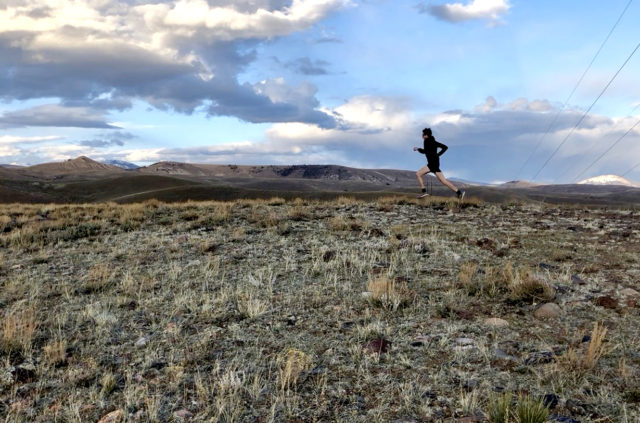
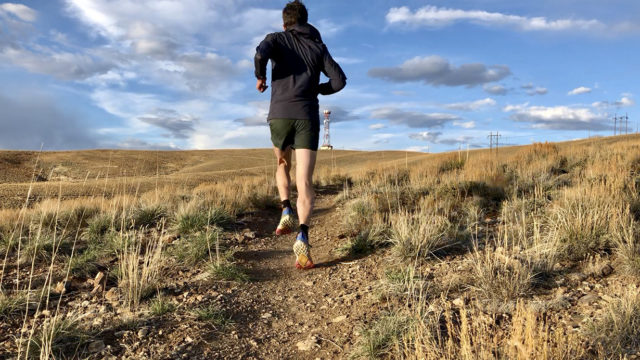
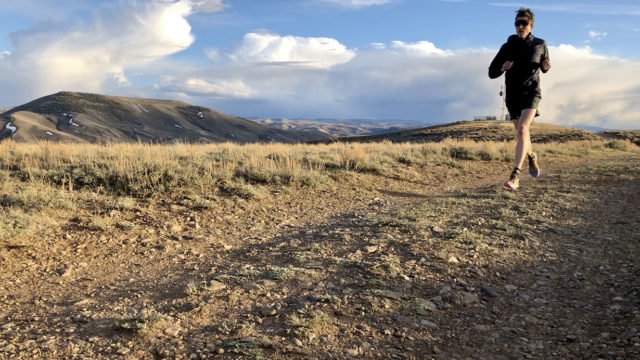
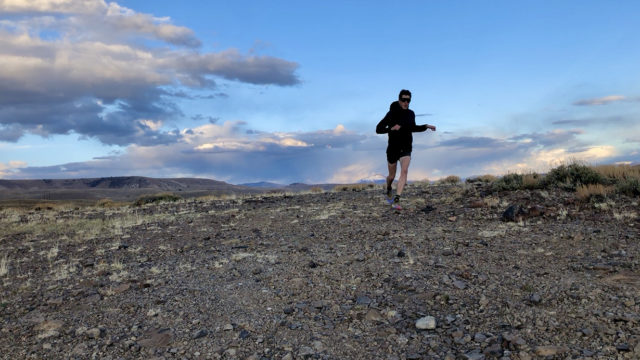
You mentioned the Altra Superior 4. I’ve been running on that. How do think the Nike Terra Kiger 5 compares? I have a foot similar to yours (it appears) and have found the Superior to be narrow but also allow for toe splay. I like the minimalist feel of the Superior – although there’s not a lot of protection and I do get similar fatigue running a couple hours. Does the Nike provide more cushioning that the Superior? Do you think the 4 mm drop is an issue if I’m used to zero drop?
Hey Daryl- good question!
The Terra Kiger definitely has more cushion / protection than the Superior 4. It’s also a much stiffer shoe, so it doesn’t feel nearly as minimal as the Superior. I find that I get more foot fatigue in the Superior than in the Terra Kiger 5, but the Terra Kiger is still definitely not a high-cushion shoe.
As for drop, I don’t think you’ll have any issues- it might take a few runs to get used to the extra heel height, but 4mm is still low enough that it doesn’t feel all that different from a zero drop shoe on trail.
Hope that helps!